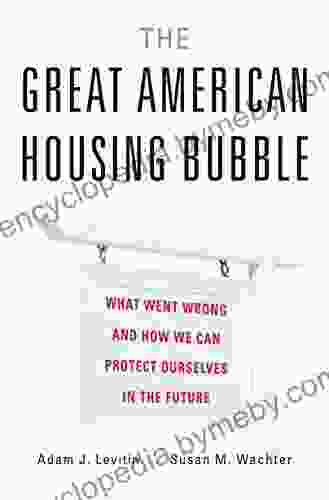In the face of unprecedented societal challenges, it is crucial to reflect on past failures and extract valuable lessons to avoid their recurrence. The recent publication, "What Went Wrong and How We Can Protect Ourselves in the Future," offers a comprehensive analysis of various failures, examining their root causes and providing actionable insights for preventing them in the future.
Delving into the Causes of Failures
The book meticulously explores the underlying factors that contribute to failures, categorizing them into four distinct types:
5 out of 5
| Language | : | English |
| File size | : | 25611 KB |
| Text-to-Speech | : | Enabled |
| Enhanced typesetting | : | Enabled |
| Word Wise | : | Enabled |
| Print length | : | 394 pages |
- Cognitive Failures: Errors in judgment, perception, and decision-making due to biases, cognitive dissonance, and limited information.
- Organizational Failures: Flaws in organizational structure, processes, and communication leading to breakdowns in coordination and accountability.
- Technological Failures: Malfunctions or vulnerabilities in technology systems, including software bugs, hardware defects, and cybersecurity breaches.
- External Failures: Unforeseen circumstances or external events beyond an organization's control, such as natural disasters, market crashes, or regulatory changes.
Through in-depth case studies and expert analysis, the book dissects real-world examples of failures, uncovering the interplay of these factors and their devastating consequences.
Protecting Ourselves from Future Failures
Armed with a deep understanding of the causes of failures, the book outlines a comprehensive framework for safeguarding ourselves in the future. It emphasizes the importance of:
- Enhancing Cognitive Resilience: Fostering critical thinking, reducing biases, and promoting open-mindedness.
- Strengthening Organizational Structures: Clarifying roles and responsibilities, improving communication channels, and establishing effective oversight mechanisms.
- Investing in Technological Robustness: Conducting thorough testing, implementing security measures, and embracing agile development practices.
li>Preparing for External Risks: Developing contingency plans, monitoring external environments, and building partnerships for collaboration.
The book also advocates for a culture of accountability and learning, encouraging organizations and individuals to embrace transparency, report errors promptly, and seek continuous improvement.
Practical Applications: Lessons for All
The lessons learned from the book's analysis have far-reaching implications across various industries and sectors. It provides practical guidance for:
- Businesses: Building resilient supply chains, mitigating operational risks, and fostering innovation.
- Governments: Enhancing policymaking, strengthening infrastructure, and promoting public safety.
- Nonprofit Organizations: Ensuring effective resource allocation, maximizing impact, and maintaining public trust.
- Individuals: Making informed decisions, managing personal risks, and building personal resilience.
By applying the principles outlined in "What Went Wrong and How We Can Protect Ourselves in the Future," individuals, organizations, and society as a whole can significantly reduce the likelihood and impact of future failures.
"What Went Wrong and How We Can Protect Ourselves in the Future" is a groundbreaking publication that serves as a roadmap for preventing future disasters. By understanding the causes of failures and adopting proactive measures, we can create a more resilient and prosperous future for ourselves and generations to come.


























































































